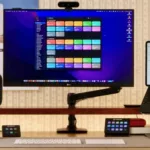Complex shortcuts
These shortcuts take advantage of advanced actions and involve intricate programming concepts that work together to solve a very specific need.
Some of these do one thing very well, while others may do lots of things as one single shortcut.
Either way, there’s likely a lot of actions and the whole thing might be hard to understand at first glance – your best bet is reading the comments and testing it out with a trial run.
Copy to my clipboard manager
Copies your clipboard and stores the contents over time, plus lets you pull from your clipboard history.
View custom date time formats
Previews a local webpage copy of Unicode Technical Standard #35 for Locale Data Markup Language, letting you see all the custom date format strings you can use in Shortcuts.
Convert time between dates to total seconds
Takes two dates chosen as input and calculates the duration in seconds between thme – works as a Unix timestamp converter.
Add Timery project
Asks you to enter a project name, client, then pick from tags or colors to create a new project in Toggle using Timery.
Toggle full screen
Simulates the key command for ⌘+⌃+F (Command + Control + F) to maximize the window to fullscreen.
Minimize window
Uses AppleScript to trigger Command + M to minimize the current window into the Dock.
Enable slow genie minimize
Enables “Slow Genie” minimizing by using the shell to rewrite a hidden system preference.
Open Preferences
Simulates the universal key command for the opening an app’s preferences: ⌘+,
Open the emoji picker
Uses AppleScript to press the key combination for the Special Characters palette.
Activate Spotlight/Alfred
Simulates the keyboard shortcut to activate Spotlight or Alfred, letting you type in your workflow command.
Activate Things quick entry
Uses AppleScript to trigger the keyboard shortcut for the Quick Entry feature of Things on the Mac.
Activate Mission Control
Simulates the key code for F3, activating Mission Control on the Mac.
Show LaunchPad
Activates the key code for F4’s native function, which triggers the LaunchPad feature that shows your app icons like an iOS Home Screen.
Activate Control Center
Uses an AppleScript command to directly activate Control Center on the Mac.
Reset Sound Recognition
Turns off all the sound recognizer options, while leaving Sound Recognition active.
Open personal YouTube playlists
Presents a menu of YouTube playlists sorted into your “Personal” group, letting you choose one and open it in the app.
More From The Library
Move screenshots to iCloud
Saves screenshots from Photos to iCloud—named like they are on macOS—and deletes the originals.
Browse The Catalog
Shortcuts Membership
Enhance your experience with bonus shortcuts, folder bundles, and exclusive perks.

Action Directory
Discover endless possibilities by combining the building blocks for Shortcuts.